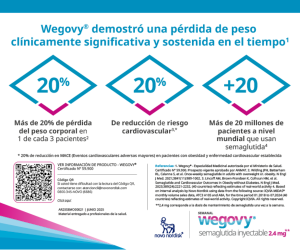Insulinization in preschoolers
Keywords:
insulinization, preschoolersAbstract
Preschoolers with type 1 diabetes constitute a vulnerable group in need of specialized health care. The first 5 years of life are crucial for optimal neurodevelopment. The human brain undergoes unique dynamic structural and functional changes during childhood and requires continuous and stable delivery of glucose for brain function and growth. Exposure to chronic hyperglycemia, hypoglycemia and glycemic variability compromises key neurodevelopmental processes in children with early-onset type 1 diabetes, generally defined as an onset prior to ages 4–7, leading structural and functional alterations in the growing brain. Reaching glycemic targets early in the evolution of the disease is challenging, most of preschoolers start with severe forms (DKA) and insulin treatment is complex and requires fine dose adjustments with particular devices adapted to their body size. Optimizing glycemia is important in preschool age children diagnosed with T1D due to their higher risk of diabetes complications and premature death than persons diagnosed with diabetes later in life.
There is also evidence that hyperglycemia during childhood raises the risk of long-term complications even if substantial improvement is achieved later during young adulthood. It is important that the diabetes team and family share the same glycemic targets; hence they should be set and evaluated together with the family to guide the treatment. From the onset, it is important for the entire diabetes team to communicate that near normoglycemia is achievable and it’s important for the child’s future. This knowledge about diabetes care needs an structured and clear education plan that the family and other care givers understand and prioritize. The introduction of diabetes technology (CGM, pumps and integrated and automatized devices) enhances glycemic control in this population avoiding an increase on the rate of severe hypoglycemia, however recent studies show that less than half of the children achieve glycemic targets.
Preschoolers present some particular issues that need to be considered at the time of implementing insulin therapy. Generally, their appetite is irregular and they are quite selective, which complicates prandial insulinization. Also, they have wider fluctuations in their insulin requirements, for which they need specific adjustments. Exercise is usually spontaneous, and frecuently they experience infectious complications that impact their glycemic profile. Therefore, having technological resources such as continuous glucose monitoring and automated insulin infusion, which facilitate flexibility and more dynamic adjustments to their treatment, are very valuable tools and should be available to all children with type 1 diabetes (T1D).
References
I. Sandy JL, et al. Demographic, clinical, management, and outcome characteristics of 8,004 young children with type 1 diabetes Diabetes Care 2024;47(4):660-667. doi: 10.2337/dc23-1317.
II. Lachin JM, et al. The beneficial effects of earlier versus later implementation of intensive therapy in type 1 diabetes. Diabetes Care 2021;44:2225-2230. doi: 10.2337/dc21-1331
III. Rawshani A, et al. Excess mortality and cardiovascular disease in young adults with type 1 diabetes in relation to age at onset: a nationwide, register-based cohort study. Lancet 2018; 392: 477-486.
IV. Mauras N, et al. Impact of type 1 diabetes in the developing brain in children: a longitudinal study. Diabetes Care 2021;44:983-992. doi: 10.2337/dc20-2125.
Downloads
Published
Issue
Section
License
Copyright (c) 2024 on behalf of the authors. Reproduction rights: Argentine Society of Diabetes

This work is licensed under a Creative Commons Attribution-NonCommercial-NoDerivatives 4.0 International License.
Dirección Nacional de Derecho de Autor, Exp. N° 5.333.129. Instituto Nacional de la Propiedad Industrial, Marca «Revista de la Sociedad Argentina de Diabetes - Asociación Civil» N° de concesión 2.605.405 y N° de disposición 1.404/13.
La Revista de la SAD está licenciada bajo Licencia Creative Commons Atribución – No Comercial – Sin Obra Derivada 4.0 Internacional.
Por otra parte, la Revista SAD permite que los autores mantengan los derechos de autor sin restricciones.




























